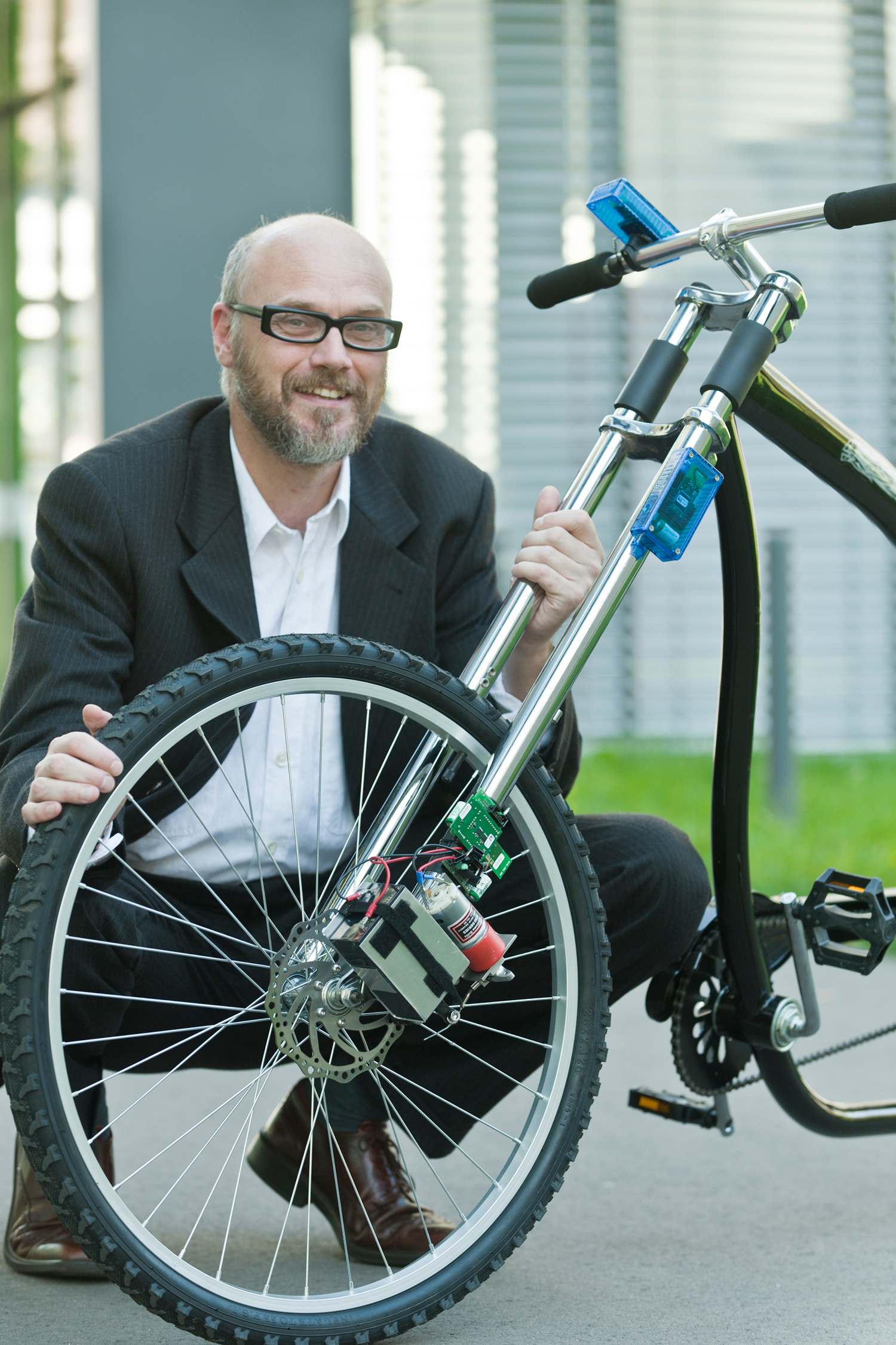Research points to future for wireless bike brakes


German computer scientists have developed technology that could allow bike brakes to go wireless, eliminating the brake cable system and lever. Researchers at Saarland University tested the system on a cruiser bike. In order to stop the bike all a cyclist has to do is squeeze a rubber grip on the handlebar that covers a pressure sensor. Once a certain level of pressure is applied, the sensor will activate a sender in a small plastic box attached to the handlebar. The sender then transmits radio signals to a receiver on the fork that holds the bike's front wheel in place, which passes them along to an actuator that activates the disk brake on the front wheel. Squeezing the handlebar grip tighter increases the power with which the brake is applied, and the current system allows the bike to brake within 250 milliseconds.
Scientists hope that research will allow them to apply these technologies to larger-scale models, like trains and airplanes. “The wireless bicycle brake gives us the necessary playground to optimize these methods for operation in much more complex systems,” said Holger Hermanns, a Saarland University professor who worked to develop the bike brake.
So just how reliable is this technology? By testing the prototype using algorithms usually used in control systems for airplanes and factories, the researchers found that the wireless bike brake system was 99.999999999997 percent reliable, meaning that in a trillion attempts, there would be three failures. Statistically, those numbers seem promising, but the project is still in its early stages. Though the scientists show no signs of back-pedaling, bike riders may be for a little while.
[via Gizmodo]
Related on SmartPlanet:
This post was originally published on Smartplanet.com